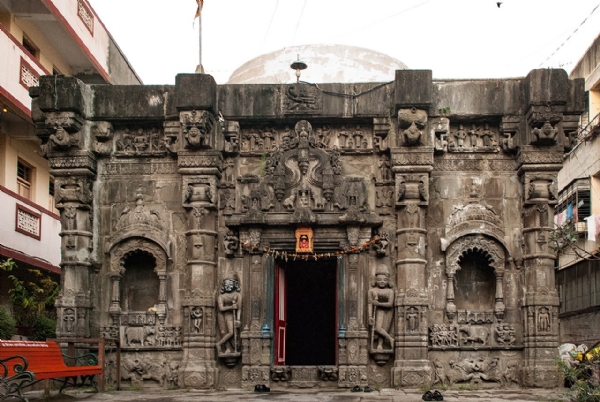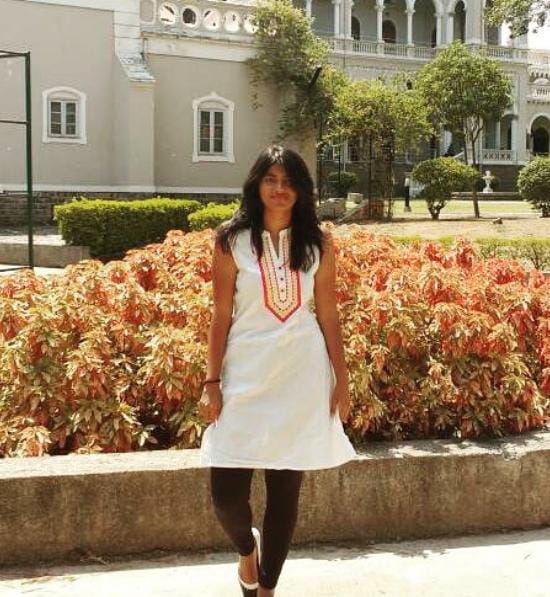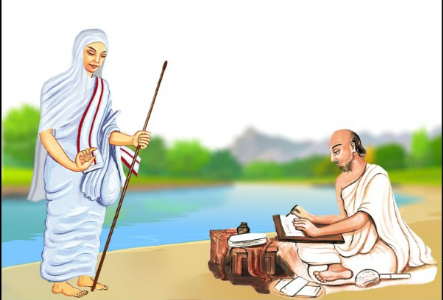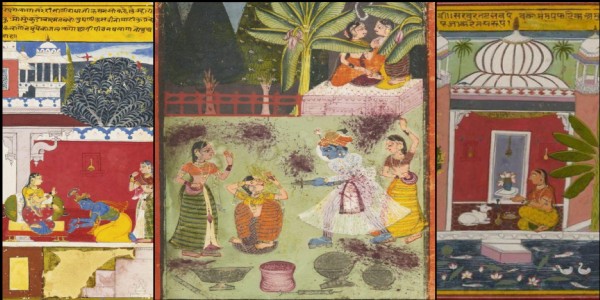Trishund Ganpati temple; know about the unique Ganesh idol with 3 tusks
It is called as the Trishund Ganpati as it has the idol of Lord Ganesha with three tusks and six hands; It is extremely unique as this depiction of Lord Ganesha is not found anywhere else in India
Total Views | 742
Did you know that in the bustling lanes of Somwar peth, in Pune lies an ancient and hidden temple of Lord Ganesha? It is not just any temple, but a truly unique one, with its rare idol and engraved walls. If you haven’t guessed, then, we are talking about the centuries old, magnificent Trishund Ganpati temple. It's time that you to explore this beauty!

The temple also houses pictures along with sculptures of Lord Shiva on the outside of it. It even seems as though the original plan was to dedicate the temple to Lord Shiva. At the entrance of the temple, you can also find sculptures of Goddess Lakshmi, goddess of prosperity upon two elephants.
The design and architecture of the temple is actually a juxtaposition of 3 different architectural styles - Rajasthani, Malwa and South Indian styles. Even after centuries, the charm the temple carries still remains the same. The temple is a must visit for anyone who is a history buff, or is culturally inclined and want to discover something unique. The temple also offers pin drop silence, somewhere you can completely enjoy solitude and oneness with God.
This temple is a masterpiece of stone masonry carvings by Bhimjigiri Gosavi and is considered to be a monument of the Gosavi sect. The entire construction is in black stone.

Resting in the by lanes of Somwar Peth near the Kamala Nehru Hospital chowk, lies a beautiful stone temple, called as the Trishund Ganpati temple. What sets it apart is that it is not easy to spot, and is said to be almost 250-year-old! This beautiful temple still stands in all its glory and has a big following among the locals. The construction of this temple was started on 26th August 1754 by Bhimjigiri Gosavi from Dhampur near Indore and was completed in 1770.
It is called as the Trishund Ganpati as it has the idol of Lord Ganesha with three tusks and six hands, and is seated on a peacock. It is extremely unique as this depiction of Lord Ganesha is not found anywhere else in India. The temple has been constructed on a high platform and has a small courtyard around it which is often decorated with earthen lights & flowers on special occasions or festivals.
The temple also houses pictures along with sculptures of Lord Shiva on the outside of it. It even seems as though the original plan was to dedicate the temple to Lord Shiva. At the entrance of the temple, you can also find sculptures of Goddess Lakshmi, goddess of prosperity upon two elephants.
One more intriguing aspect of the temple is the fact that it has three inscriptions on the wall of the sanctum of the temple. While two of them are in Devanagari script and Sanskrit language, one of them is written in Persian.
The first inscription is about the foundation of Rameshwar, and the tale of inspection of the temple in 1754. While on the second inscription there are verses from the Bhagavad Gita and the tale of construction of Gurudev Datta temple. That’s not all, the temple also has some inscriptions from the British era too.
In one of the sculptures, in the front of the temple, you can see a rhinoceros being tied tight with iron chains by British soldiers. This imagery dates back to the fact that after the battle of Plassey in 1757, the English captured Bengal & Assam. Since rhinos symbolise Assam, the image narrates the story of the state.
The design and architecture of the temple is actually a juxtaposition of 3 different architectural styles - Rajasthani, Malwa and South Indian styles. Even after centuries, the charm the temple carries still remains the same. The temple is a must visit for anyone who is a history buff, or is culturally inclined and want to discover something unique. The temple also offers pin drop silence, somewhere you can completely enjoy solitude and oneness with God.
This temple is a masterpiece of stone masonry carvings by Bhimjigiri Gosavi and is considered to be a monument of the Gosavi sect. The entire construction is in black stone.








